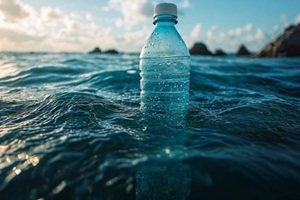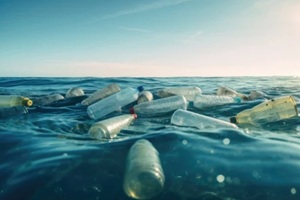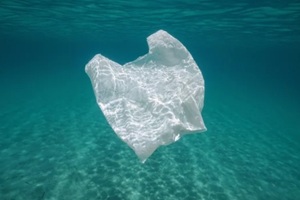April 17, 2025

Plastics have revolutionized industries worldwide, and in the effort to align with environmental concerns, they are making significant progress in the area of sustainable alternatives. Scientists at the RIKEN Center for Emergent Matter Science (CEMS) have introduced a revolutionary material poised to transform the future of plastics. As strong and flexible as standard plastic, this advanced material distinguishes itself by safely decomposing in both soil and seawater, leaving behind eco-friendly remnants.
Designed to combat the persistent issue of microplastic pollution, this material introduces a sustainable option without compromising performance. Its unique properties, including recyclability and adaptability for diverse applications, offer exciting possibilities for industries seeking practical, eco-friendly solutions.
For businesses aiming to align with evolving environmental priorities and plastic recycling initiatives, this innovation is a step toward a cleaner, more sustainable future.
This innovative plastic material addresses the growing problem of microplastic pollution by breaking down in seawater into harmless components, preventing harmful accumulation in marine ecosystems.
Its distinct design incorporates supramolecular structures with reversible salt bridges that provide exceptional durability during use while triggering biodegradability when exposed to saltwater. This combination of strength and environmentally responsive behavior makes it a standout material in the quest for sustainable solutions.
One of the material’s most notable advancements is its innovative desalting mechanism. During manufacturing, two ionic monomers (sodium hexametaphosphate and a guanidinium compound) are combined, with desalting stabilizing the cross-linked salt bridges that give the plastic its strength. Once exposed to seawater, the resalting mechanism reverses these bonds, allowing the plastic to dissolve efficiently and biodegrade completely.
This newly developed plastic redefines expectations for sustainable materials by delivering performance that rivals or surpasses conventional plastics. Designed with a focus on durability, it offers exceptional hardness, flexibility, and tensile strength, addressing long-standing perceptions that eco-friendly alternatives are weaker.
Its non-toxic and non-flammable composition further enhances its appeal, making it a safe option across various industries. Unlike many traditional plastics, it produces no carbon dioxide emissions during use or degradation, offering a cleaner solution for environmentally conscious businesses.
The adaptable nature enables this plastic to serve various purposes incredibly effectively. From precise 3D printing to creating medical-grade devices, it can be customized to meet specific industrial requirements, including strength, durability, flexibility, or scratch resistance. Beyond its versatility in design, its ability to break down in soil adds a remarkable post-use benefit.

As the plastic biodegrades, the material releases phosphorus and nitrogen, acting as a natural fertilizer and contributing to soil enrichment. In fact, laboratory tests show that sheets of this plastic degrade completely in just 10 days, demonstrating its efficiency as an environmentally responsible option.
With its blend of innovation, strength, safety, and adaptability, this innovative material stands poised to transform industries looking for high-performance solutions that also align with sustainability goals.
Offering recyclability as a core benefit, this plastic drives progress in resource efficiency and helps combat waste challenges. In laboratory tests, researchers successfully recovered up to 91% of hexametaphosphate and 82% of guanidinium components, demonstrating the material’s ability to re-enter the production cycle with minimal loss involved.
Such high recovery rates make it an attractive option for industries prioritizing sustainable practices. The plastic’s degradable and renewable properties align seamlessly with global sustainability goals, reducing reliance on non-renewable resources and providing a forward-looking solution to address mounting environmental concerns.
The material’s versatility paves the way for its adoption across diverse industries, including marine, healthcare, and manufacturing sectors. Its ability to degrade in seawater makes it particularly suitable for ocean-degradable packaging, while its durability and adaptability offer the potential for use in medical-grade plastics and industrial applications requiring high performance.
As environmental regulations become more strict and consumers increasingly expect sustainable alternatives, this plastic stands out as a compelling option for businesses seeking to meet these evolving expectations.
Practical examples highlight its potential and promise: for instance, the creation of eco-friendly packaging that disintegrates safely in marine environments or strong, reusable components for healthcare products.
Having this potent combination of functionality and environmental responsibility positions the new plastic material as a solution that bridges industry needs with sustainability, marking a step toward a more responsible approach to production and consumption.

The newly developed plastic represents a groundbreaking step toward addressing global environmental challenges while maintaining the performance standards industries demand.
Its ability to dissolve in seawater, biodegrade in soil, and recycle efficiently highlights its role in reducing microplastic pollution while promoting a circular economy. With adaptability across sectors, it offers industries an opportunity to embrace sustainable practices without compromising material quality or functionality.
Professionals in the plastics field are urged to consider the wide-ranging potential of this cutting-edge material. Join PLASTICS, the Plastics Industry Association, to stay informed on advancements in sustainable plastics, participate in plastic recycling initiatives, and access valuable resources to lead the transition toward more environmentally responsible practices.
PLASTICS and the Future Leaders in Plastics (FLiP) Committee are devoted to supporting and encouraging the next generation of plastics leaders who will play a crucial role in the innovation, technology and future of the plastics industry. FLiP’s mission is to provide young professionals under the age of 40 the exposure, education and resources they need to build lifelong careers in plastics. Want to join? Want to get your employees involved? Email: [email protected]